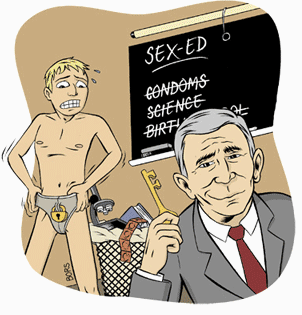I thought Nakkula framed this
chapter in an interesting way. Nakkula
writes about how the media and American culture are presented to people: “Get
more! Get more than you currently have,
more than you’re currently getting, more, even, than you ever imagined. The for-profit media is designed to seduce”
(180). This idea that Americans are never satisfied inevitably affects
growing adolescents’ identities. This is especially true with the confusion that surrounds sexual identity.

Nakkula argues that sexuality scripts are infused with ‘traditional romantic tales’
purported by Disney and romantic comedies.
Obviously these ideas aren’t all bad, but the distinction is never
explicitly made between the reality of love and sexuality vs. the myths of
prince charming and Cinderella. If there’s
one thing I’ve learned in this co-hort, it’s the lack of explicit direction and
explanation in our society. It seems
reasonable to me, and not at all controversial, if we discuss this in schools
more openly. If it’s done the right way,
this would help some students who are having difficulties with their sexual
identities.

“Early adolescents are filled with such
questions without quite being able to formulate them and, typically, without any
safe spaces and available adults with whom to work the questions out” (184). Again, if anything this book has taught me,
it’s the importance of having safe spaces in your school. I believe that my credit recovery class room,
since it’s small, has been a safe space for some students to succeed where they
hadn’t before. I try to allow some
discussions about identity to happen organically in the classroom. Sexuality is one place I have trouble going
to, although I’m sure my case study student will not have any qualms about
discussing her thoughts on this subject, considering she already is giving me
TMI without even asking! But, she probably does this because she doesn't have any adults to talk to about her struggles. Obviously, this
chapter gave me some confidence in discussing these matters with the student.
I always thought school sex-ed was
pretty lame and tame, but the way Nakkula puts it, it’s a disgrace to
society. The “medicalization of adolescent
society” is so obviously not-helpful and not-reality. Ditto to abstinence. The idea of discussing desire with the
biological ramifications of sexuality makes a helluva lot more sense than what
is being taught now. We need to get rid
of the myth that people innately come to their sexual orientation. They might come to these conclusions
eventually, but the pain that the adolescents may have to go through could be
avoided.

The last two conclusions I drew from
this chapter were quite important to my case study. Nakkula discusses the various models used to
understand sexuality and identity in adolescents. He’s careful to note that “we do not use
developmental theory and research of this type to determine what stage someone
is in, but rather that we draw from this knowledge base as a way of orienting
ourselves to what MIGHT be going on for each individual” (197). I think that’s a huge idea for my case
study. I don’t know if I’m going to
completely slam-dunk figure out what’s going on with this kid. If I keep in mind I’m trying to look for
possible solutions, and not the number one solution, I think I’ll be able to
help my student.
The last important note from Nakkula
was keeping in mind that “the key to comprehend and engage with the ways in
which students are making meaning of their sexual identities and, ideally, to
help them cultivate contexts within and outside of school for supportively
nurturing its development” (197). This
is a zoom-out idea for me. We’re not
here to solve all of society’s problems.
We, as educators, are simply trying to provide a place for students to
feel safe to grow and develop. Due to the
way our society is structured, we sometimes overlook some students. This is especially true with homosexuality,
considering both sexuality and homosexuality are taboo subjects. Rome wasn’t built in a day, but hopefully the
ripples will be felt if we start making changes.

Hi Corey - I feel the same about my classroom as it sounds that you do about your credit recovery class. Due to its small nature, I get to know the students pretty well (depending on their comfort in sharing). From the first day, the behavior specialist and I offer the option to our students to have conversations (often difficult) with us when something is on their minds. Many students take us up on this opportunity and those are the students who I truly feel I have a positive relationship with. These students are often away from their families for the first time and are figuring out many things in life. Throughout this book I have really become more comfortable with the idea of co-authoring their stories!
ReplyDeleteGreat job once again, and as always, I appreciate your use of media. To the content... I want to agree with you that these kinds of conversations should be taking place in schools, but is that the kind of school you work in? Did you attend a high school as a student where this kind of thing was safe to talk about? I don't think of high schools as safe places AT ALL, and especially not for conversations about sexuality and how it molds one's identity. Sincerely, what do you think one of those word posters would look like if we were to take all of the dialogue spoken in one high school lunch period? Would the biggest words be those that are encouraging, loving, supportive? I suspect not, but I'm interested in what you think. And please don't think that I disagree with your sentiment, because I actually agree that schools should be those safe places. I just don't believe they are.
ReplyDelete